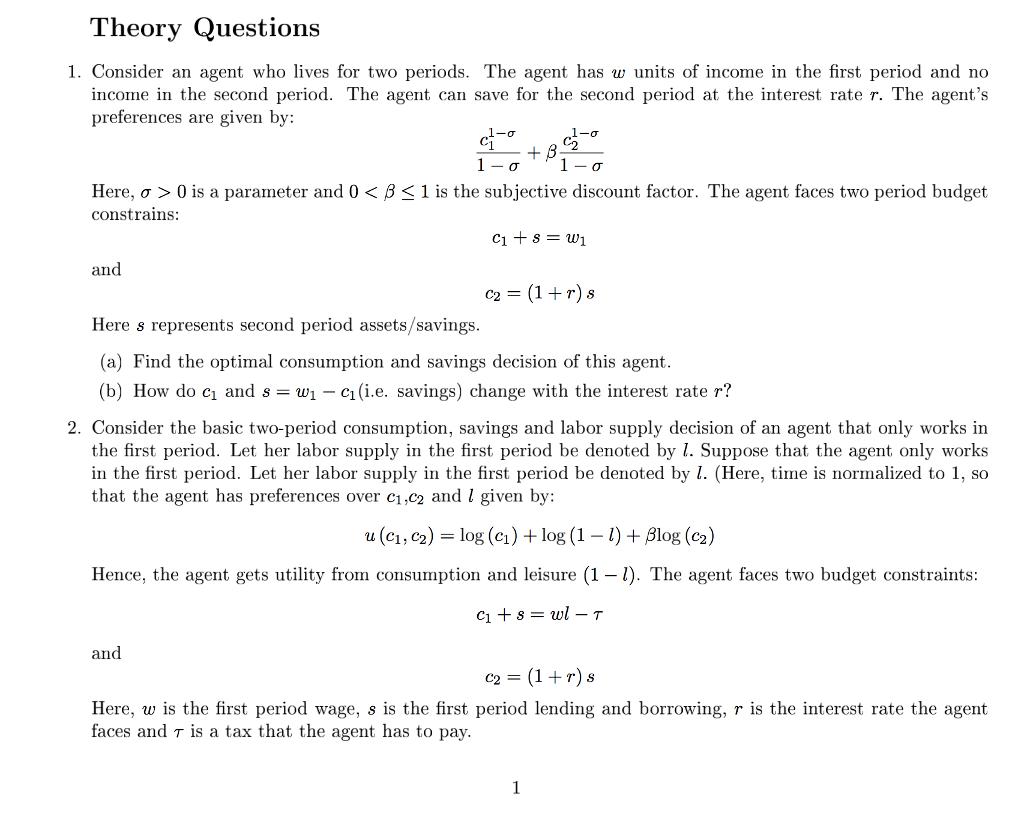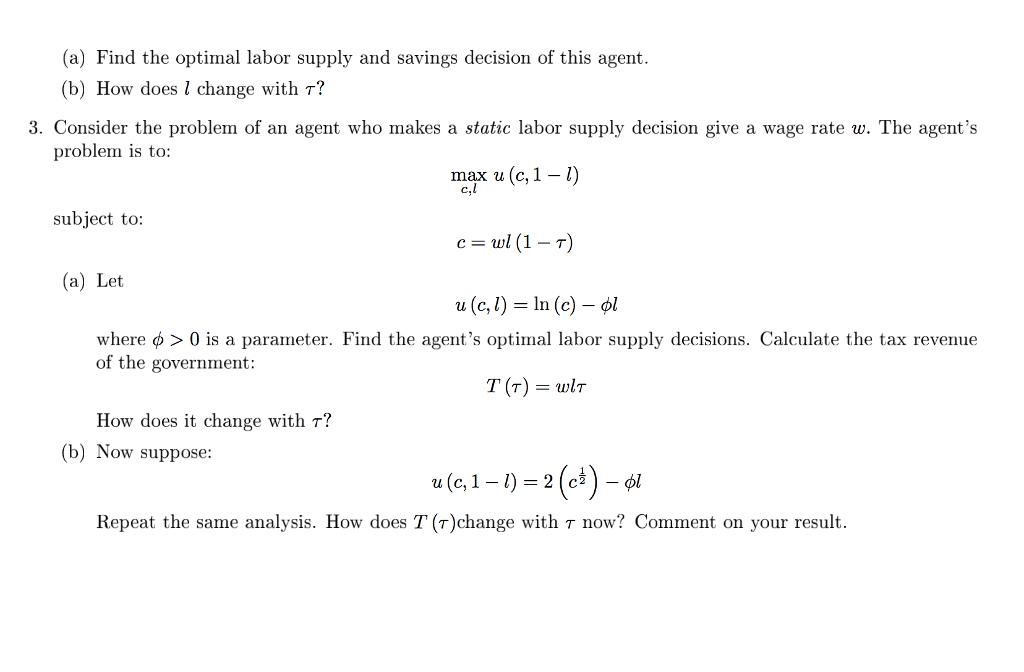Answered step by step
Verified Expert Solution
Question
1 Approved Answer
Theory Questions 1. Consider an agent who lives for two periods. The agent has w units of income in the first period and no


Theory Questions 1. Consider an agent who lives for two periods. The agent has w units of income in the first period and no income in the second period. The agent can save for the second period at the interest rate r. The agent's preferences are given by: and 1-o c 1-o +. Here, o> 0 is a parameter and 0 < 3 < 1 is the subjective discount factor. The agent faces two period budget constrains: and - 1-o C + s = W C = (1+r) s Here s represents second period assets/savings. (a) Find the optimal consumption and savings decision of this agent. (b) How do c and s = w c(i.e. savings) change with the interest rate r? 2. Consider the basic two-period consumption, savings and labor supply decision of an agent that only works in the first period. Let her labor supply in the first period be denoted by 1. Suppose that the agent only works in the first period. Let her labor supply in the first period be denoted by I. (Here, time is normalized to 1, so that the agent has preferences over C1,C2 and I given by: u (C, C) = log (c) + log (1-1) + Blog (C) Hence, the agent gets utility from consumption and leisure (1-1). The agent faces two budget constraints: C +8= wl - T 1 C = (1 + r) s Here, w is the first period wage, s is the first period lending and borrowing, r is the interest rate the agent faces and T is a tax that the agent has to pay. (a) Find the optimal labor supply and savings decision of this agent. (b) How does I change with 7? 3. Consider the problem of an agent who makes a static labor supply decision give a wage rate w. The agent's problem is to: subject to: (a) Let How does it change with 7? max u (c, 1-1) c,l u (c, l) In (c) ol where > 0 is a parameter. Find the agent's optimal labor supply decisions. Calculate the tax revenue of the government: T(T) = wlT (b) Now suppose: c=wl (1-7) = 2 (cz) - - ol Repeat the same analysis. How does T (7) change with 7 now? Comment on your result. u (c, 1-1)=2
Step by Step Solution
★★★★★
3.51 Rating (148 Votes )
There are 3 Steps involved in it
Step: 1
1 a Max Ci C C 10 Max B 10 5t C W C 1r 8 FOC Substituting ...
Get Instant Access to Expert-Tailored Solutions
See step-by-step solutions with expert insights and AI powered tools for academic success
Step: 2

Step: 3

Ace Your Homework with AI
Get the answers you need in no time with our AI-driven, step-by-step assistance
Get Started


